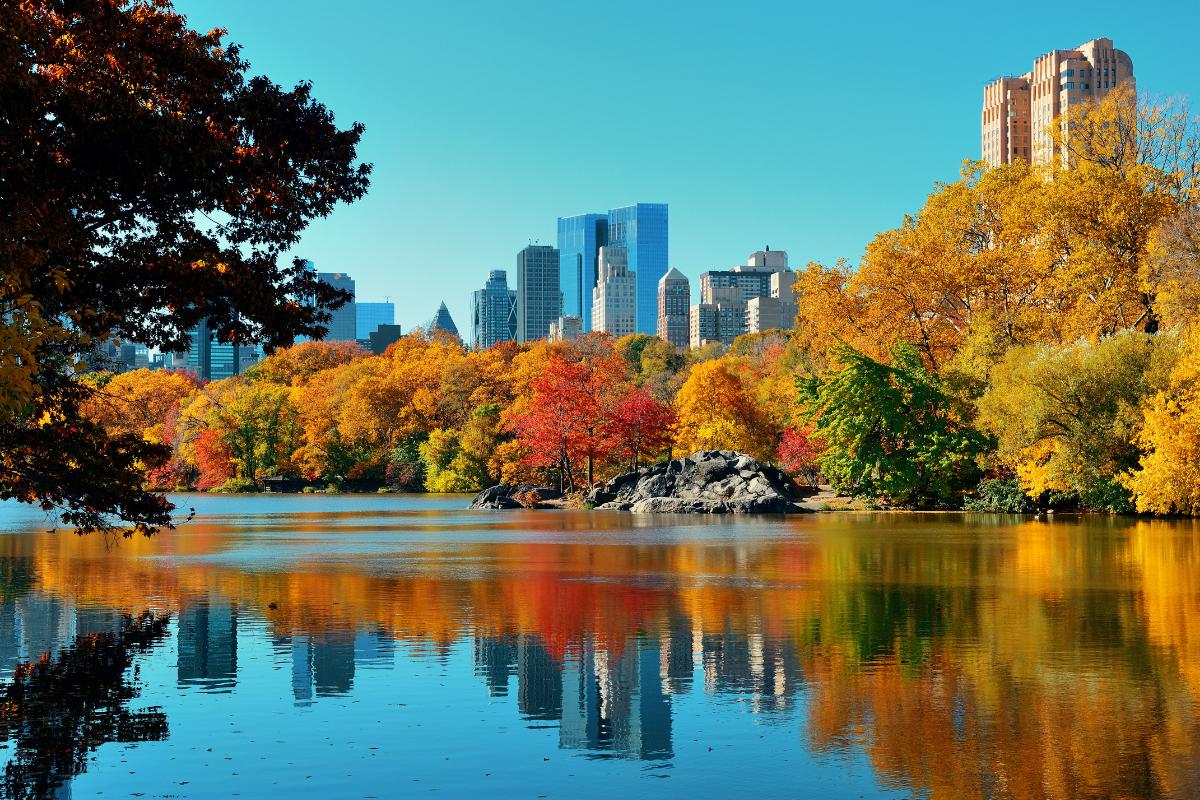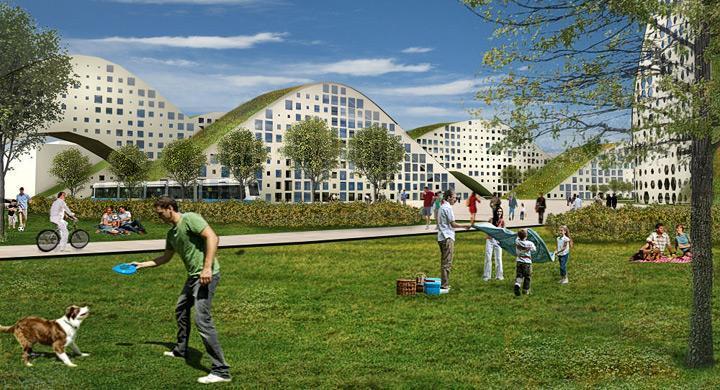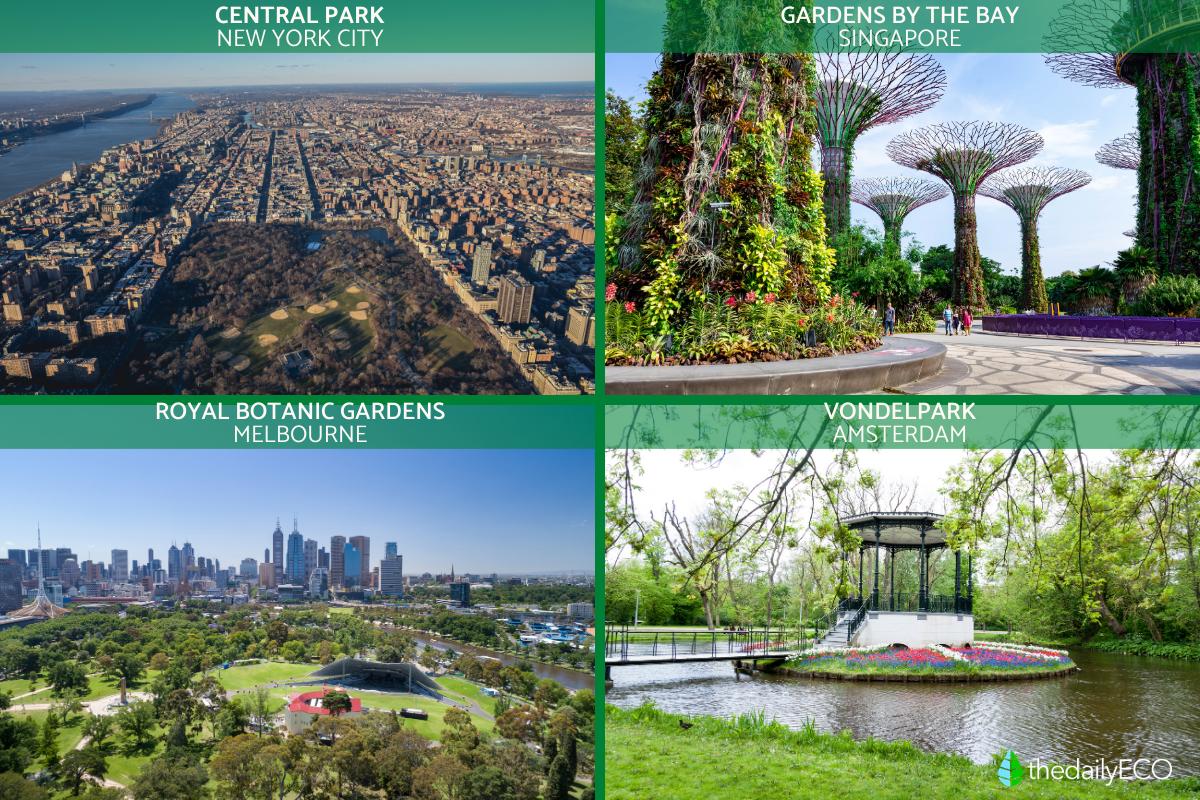Why Are Green Spaces Important?
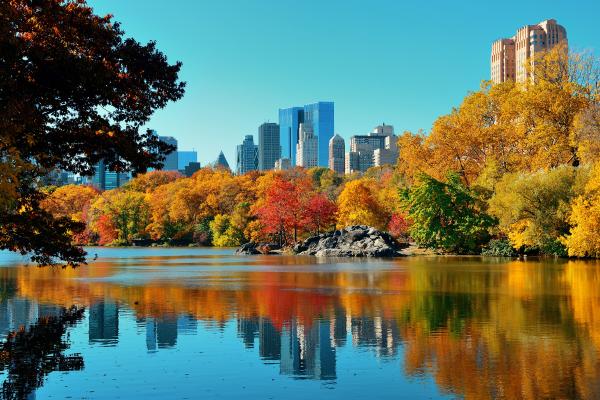
As cities continue to grow around the world, the importance of urban green spaces is becoming increasingly clear for both the environment and our well-being. These vital areas, ranging from small neighborhood parks to expansive urban forests, offer essential benefits that help make cities livable and sustainable. Urban green spaces do more than just add a touch of nature to our concrete jungles. They create complex systems that clean our air, provide homes for wildlife, cool our neighborhoods, and offer spaces for communities to come together.
This article by thedailyECO explores the importance of green spaces in urban environments, as well as how they shape our cities, from their essential contributions to environmental health to their positive impact on community well-being.
What are green spaces in urban areas?
Green spaces are designated areas of vegetation within cities and metropolitan areas. From small gardens to vast urban forests, these natural spaces are crucial pieces of city infrastructure.
The World Health Organization emphasizes that everyone should be able to reach a green space within a 5-minute walk (about 300 meters) from their home, making nature's benefits accessible to all city residents.
These spaces come in two main types:
- Natural green spaces: these are survivors of original ecosystems, developing on their own over time. Think of patches of woodland, wetlands, or meadows that still exist within city boundaries. While city life affects them, they maintain much of their natural character.
- Designed green spaces: as cities grew and natural areas shrank, people began creating new green spaces. These include public parks, tree-lined streets, community gardens, and green areas around schools and hospitals. Though shaped by human hands, these spaces can still offer significant environmental benefits when well-planned.
These spaces work best when they're connected. That's why cities are creating green corridors, which are strips of nature that weave through urban areas along rivers, walking paths, and tree-lined streets. These natural highways let wildlife move safely through the city, while giving residents pleasant routes for walking or cycling between parks and neighborhoods.
Did you know that urban forests provide benefits worth millions to cities? Discover the full impact of city trees in our detailed analysis.

Environmental benefits of urban green spaces
Urban green spaces serve as environmental systems within cities. They provide three key benefits:
Clean the air:
Trees and plants in urban green spaces actively clean our air by capturing pollutants and dust particles on their leaves and bark.
In fact, a mature tree can absorb up to 150 kg of CO2 per year, while also releasing vital oxygen. Common urban species like the London Plane tree (Platanus × acerifolia) are particularly effective at trapping urban pollutants, thanks to their large leaves and thick bark.
Regulate temperature:
Green spaces help combat the urban heat island effect, where cities are significantly warmer than surrounding rural areas.
Through shade and evapotranspiration, parks and urban forests can reduce local temperatures by 2-8°C (35.6-46.4°F). This cooling effect is especially important during summer heatwaves, when temperature differences between green spaces and built-up areas are most pronounced.
Support wildlife populations:
City green spaces provide habitats for wildlife and maintain urban ecosystems. Parks support biodiversity through:
- Flowering plants that attract pollinators.
- Vegetation layers that shelter birds and mammals.
- Green corridors that connect wildlife populations.
These spaces work together as networks, supporting biodiversity across cities and connecting to wider regional ecosystems. Discover more about how green corridors create living networks through urban landscapes in our other article.

Health benefits of urban green spaces
Access to urban green spaces shapes both individual and community health. Research consistently shows these natural areas provide measurable benefits for physical and mental wellbeing:
Mental health:
Regular exposure to green spaces reduces stress, anxiety, and depression. Studies indicate that even short visits to parks can lower cortisol levels, which is the body's main stress hormone.
Research shows that time spent in green spaces improves cognitive function in several ways. Contact with nature restores attention spans and reduces mental fatigue, particularly for people who work indoors or spend long hours on screens. Urban residents who regularly visit parks report better sleep quality and improved ability to focus on daily tasks.
The benefits of green spaces go beyond stress relief. Studies have shown that people residing near parks and other natural areas experience lower rates of depression and anxiety, and demonstrate improved emotional control. These positive effects seem to be most pronounced in densely populated urban environments, where access to nature offers a vital antidote to the stressors of city life, such as noise and overcrowding.
Physical health:
Urban green spaces encourage physical activity by providing:
- Safe spaces for exercise
- Walking and cycling paths
- Areas for sports and recreation
- Playgrounds for children
Interestingly, people living near parks are more likely to meet recommended physical activity levels. This increased physical activity can lead to improved cardiovascular health and reduced obesity rates. Factors like well-maintained paths, adequate lighting, and clear sight lines contribute to a safer and more inviting park environment, encouraging regular use by residents.
Community wellbeing:
Urban green spaces bring neighbors together naturally, creating places where communities grow stronger. Parks and gardens become meeting points where people connect. Whether they're walking dogs, watching their kids play together, or joining a weekend farmers' market, green spaces work for everyone.
When well-maintained and accessible, they give all city residents a place to experience nature's benefits. This matters most in dense neighborhoods where private gardens are rare, making public green spaces essential gathering spots that help build healthier, more connected communities. There's a reason why time in nature feels so good. Learn about the science-backed practice of mindful forest immersion in our other article.
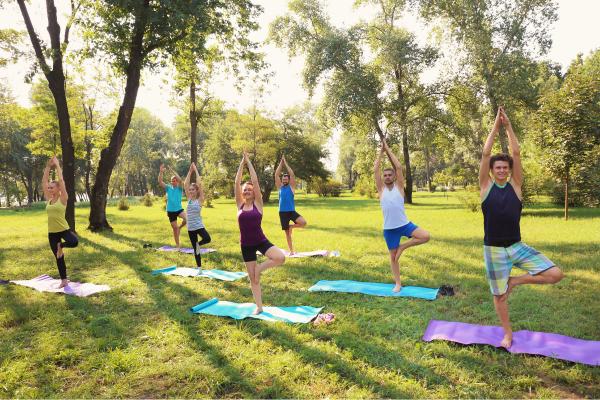
Examples of urban green spaces
Cities worldwide offer inspiring examples of successful urban green spaces. These parks and gardens showcase how vision and planning can create lasting natural sanctuaries within busy urban environments.
Central Park, New York City (341 hectares / 843 acres)
This iconic park demonstrates how thoughtful design creates lasting impact. Created in the 1850s by Frederick Law Olmsted and Calvert Vaux, Central Park pioneered the concept of large urban parks accessible to all city residents. Today it hosts over 40 million visitors yearly while supporting diverse ecosystems and providing crucial green infrastructure.
Gardens by the Bay, Singapore (101 hectares / 250 acres)
Singapore's innovative approach to vertical green spaces shows how cities can blend nature with modern architecture. The Supertree Grove features vertical gardens up to 50 meters (164 feet) tall, demonstrating how urban green spaces can evolve beyond traditional ground-level parks.
High Line, New York City (2.33 kilometers / 1.45 miles)
This former elevated railway transformed into a linear park proves how cities can repurpose industrial infrastructure into thriving green spaces. The High Line sparked similar projects worldwide, showing how creative urban planning can add green space even in dense city centers.
Royal Botanic Gardens, Melbourne (94 hectares / 232 acres)
Established in 1846, these gardens combine scientific research with public recreation. They showcase how urban green spaces can serve multiple purposes, supporting biodiversity research while providing public recreation areas.
Vondelpark, Amsterdam (47 hectares / 116 acres)
Amsterdam's most popular park welcomes over 10 million visitors annually. Created in 1865, it exemplifies how urban green spaces can successfully integrate multiple uses. From protected bird sanctuaries to cultural venues. The park's network of ponds and gardens demonstrates sustainable water management while providing vital green space in a dense urban area.
Curious about how green spaces fit into the bigger picture of urban sustainability? Learn about the future of eco-friendly cities in our other article.
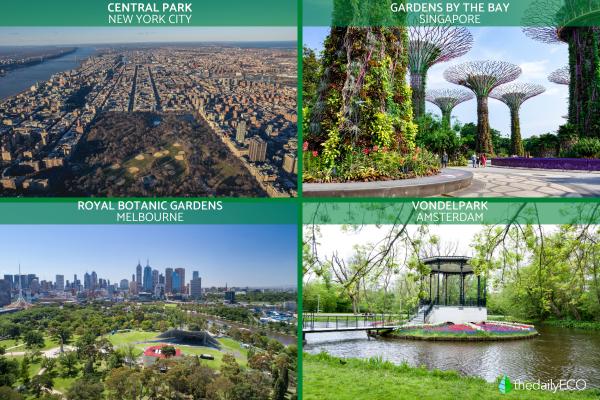
If you want to read similar articles to Why Are Green Spaces Important?, we recommend you visit our Architecture and urban planning category.
European Environment Agency. (n.d.). Who benefits from nature in cities?. Retrieved January 28, 2025, from https://www.eea.europa.eu/publications/who-benefits-from-nature-in
National Center for Biotechnology Information. (2015). Urban green spaces and health. International Journal of Environmental Research and Public Health, 12(4), 4365–4389. Retrieved January 28, 2025, from https://www.ncbi.nlm.nih.gov/pmc/articles/PMC4556255/





